Solar Panels Performance in Extreme Heat
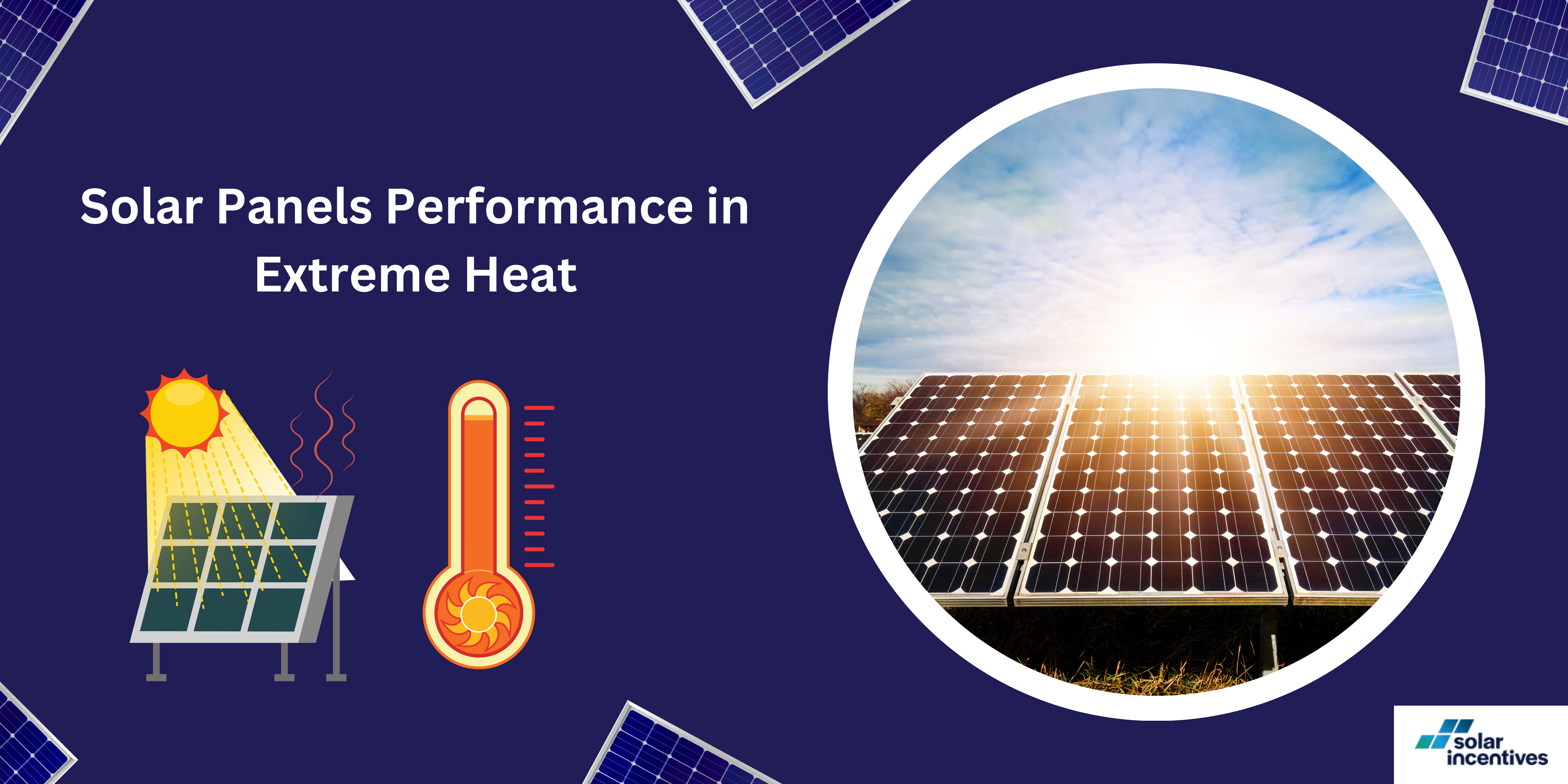
Steve Hill
Expert in Residential and Commercial Solar Solutions and Energy Efficiency
4 min read · 20th December 2023
Introduction
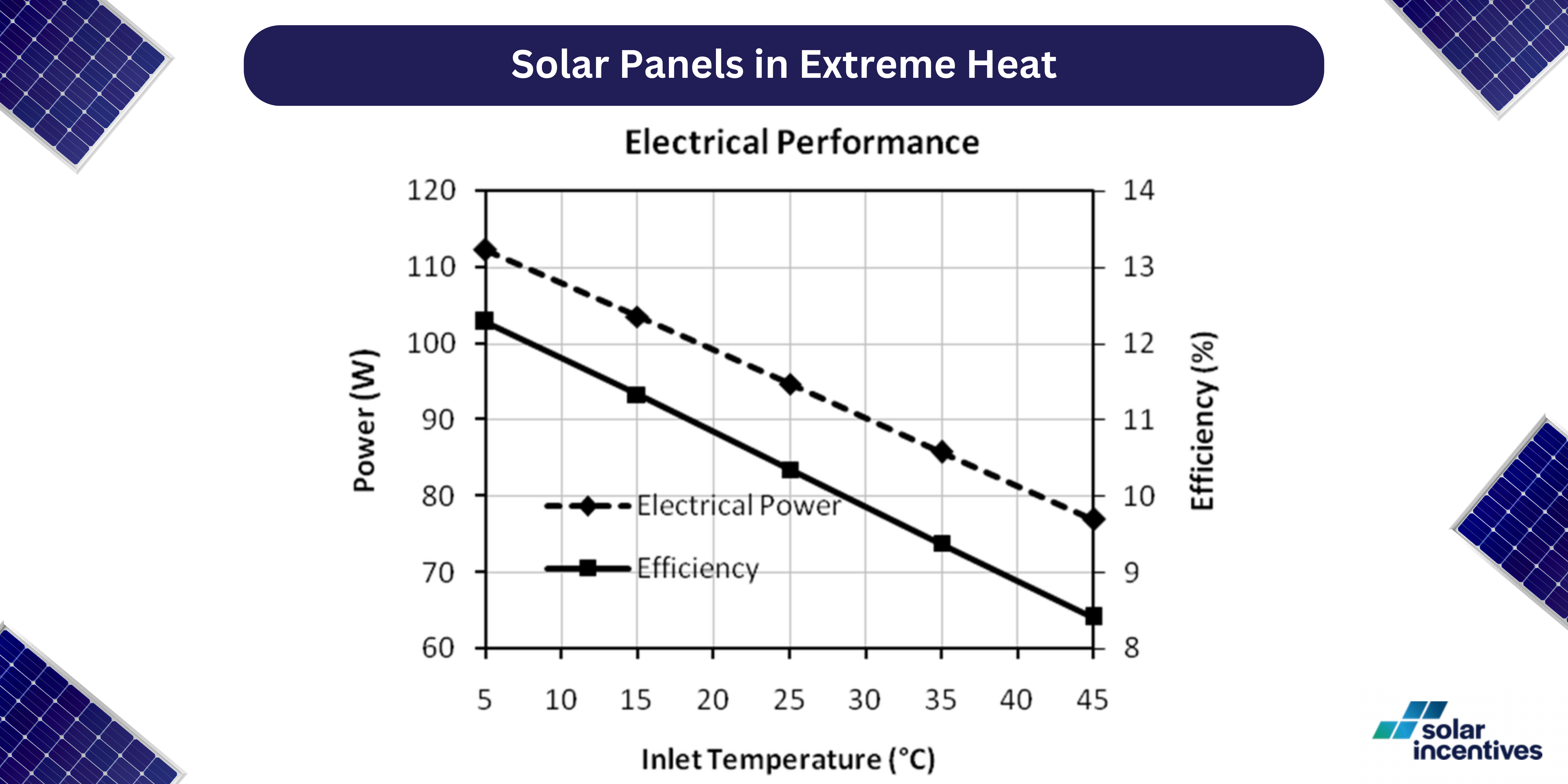
Australia is leading the world in sustainable energy with its vast landscapes and ample sunlight.
Solar power is becoming increasingly popular as the country tackles climate change. The country strives to cut carbon emissions by embracing solar power.
However, the sun-drenched continent of Australia presents unique challenges. The challenges primarily centre on extreme heat in the Australian climate.
Overview of Solar Energy Growth in Australia
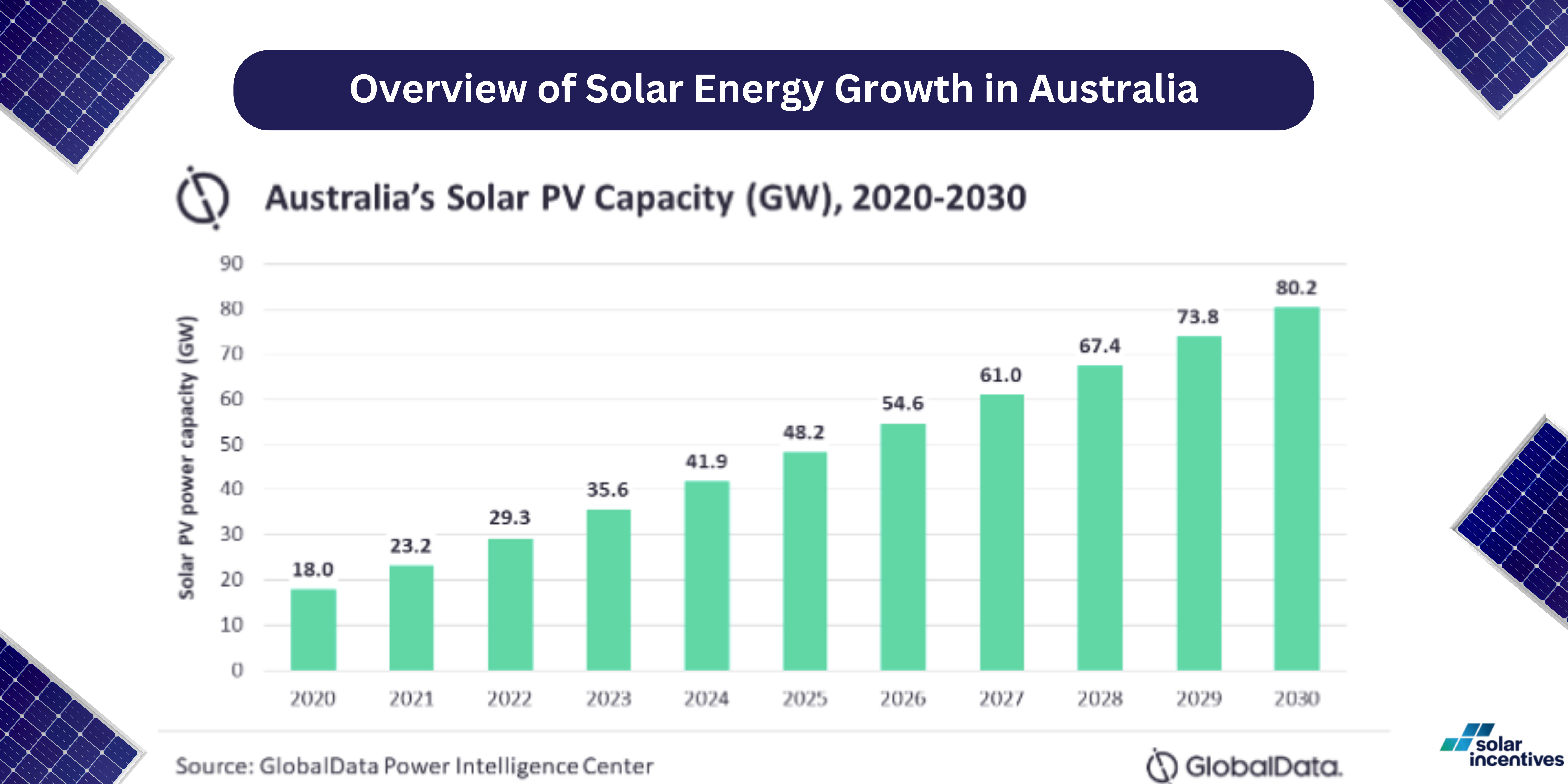
Solar energy adoption in Australia has increased in recent years. It plays a crucial role in diversifying the country’s energy sources.
Solar panels can be found on urban rooftops and expansive solar farms in Australia. Australia has a huge potential for solar power. It is important to understand how much solar power is currently being used in the country.
We’ll explore why harnessing solar energy is not just an option but a necessity in a country blessed with ample sunlight.

Overview of Australia’s Climate Patterns and Temperature Extremes
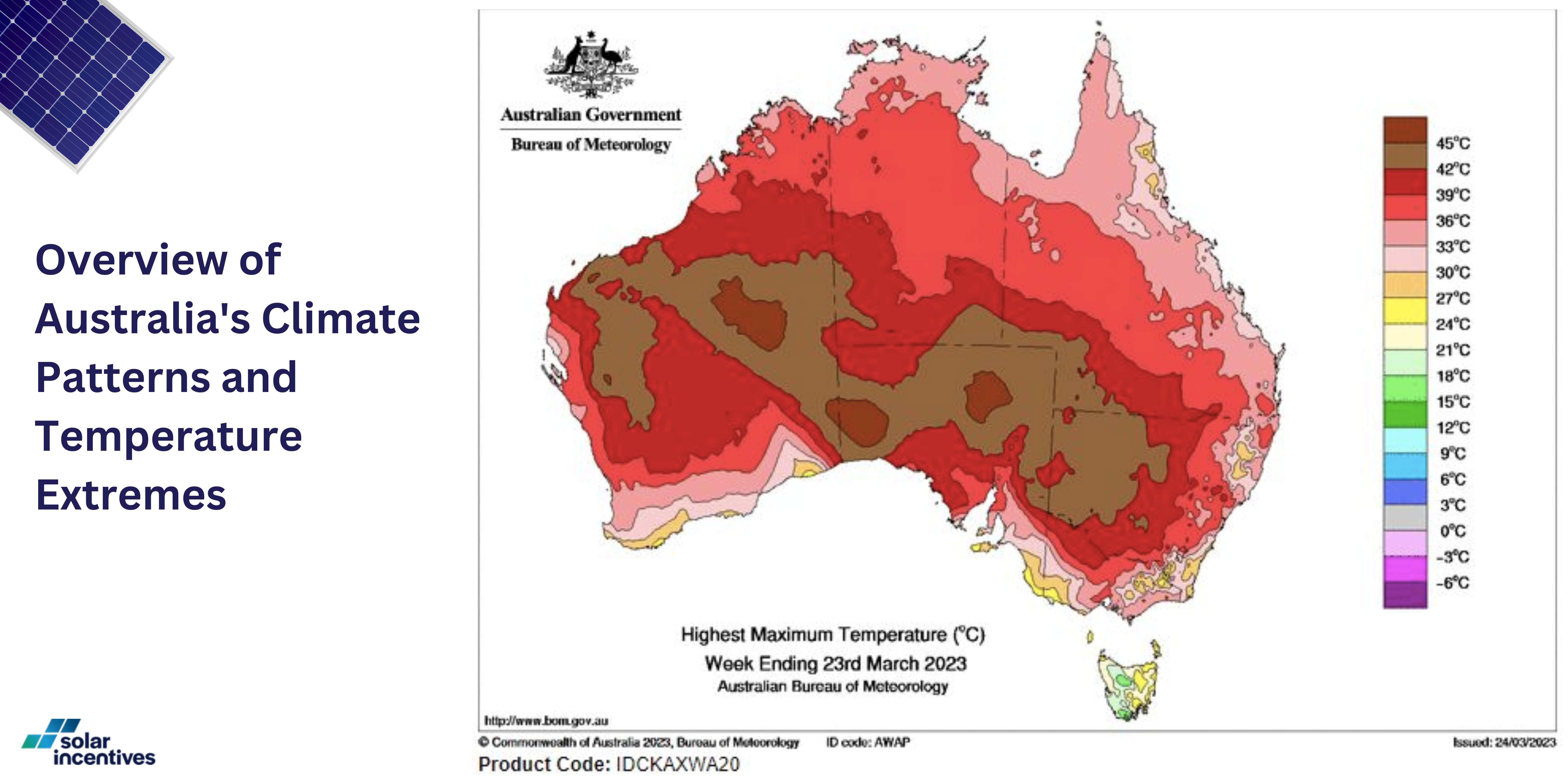
Australia’s vast landmass encompasses a remarkable variety of climates, ranging from tropical regions in the north to arid central areas and temperate zones in the south.
This diversity presents unique opportunities and challenges for the implementation and optimization of solar energy systems.
Understanding the specific needs and conditions of each climate zone is essential for maximising the efficiency and durability of solar installations.
Tropical North: Sunlight and Heat Challenges
In Australia’s tropical north, the abundance of sunlight offers an excellent opportunity for solar energy production. However, this region also experiences extreme heat and humidity, which can affect the efficiency and lifespan of solar panels.
To ensure optimal performance, it’s important to select solar panels and components that are specifically designed to withstand high temperatures and humidity.
Cooling strategies, such as installing panels at an angle to enhance air circulation, can also help mitigate the heat’s impact.
Arid Central Regions: Sunlight in Harsh Conditions
The arid central regions of Australia, characterised by their desert-like conditions, pose a different set of challenges.
Here, solar panels are subjected to extreme temperatures, intense sunlight, and frequent dust storms. These factors can reduce the efficiency of solar systems.
To combat these issues, selecting solar panels with durable coatings and implementing robust mounting solutions is crucial.
Automated cleaning systems can help maintain panel efficiency amidst frequent dust accumulation.
Temperate South: Balancing Sunlight and Moderate Climates
In the temperate southern parts of Australia, the climate is more moderate, with a balance of sunlight and cooler temperatures.
This environment is ideal for solar panels. Moderate temperatures can enhance their efficiency. However, the varying levels of sunlight throughout the year require a careful approach to system design.
Implementing adjustable mounting systems and choosing panels with a high efficiency in diffused light conditions can optimise energy production in these regions.
Impact of Heat on Solar Panel Efficiency and Energy Production
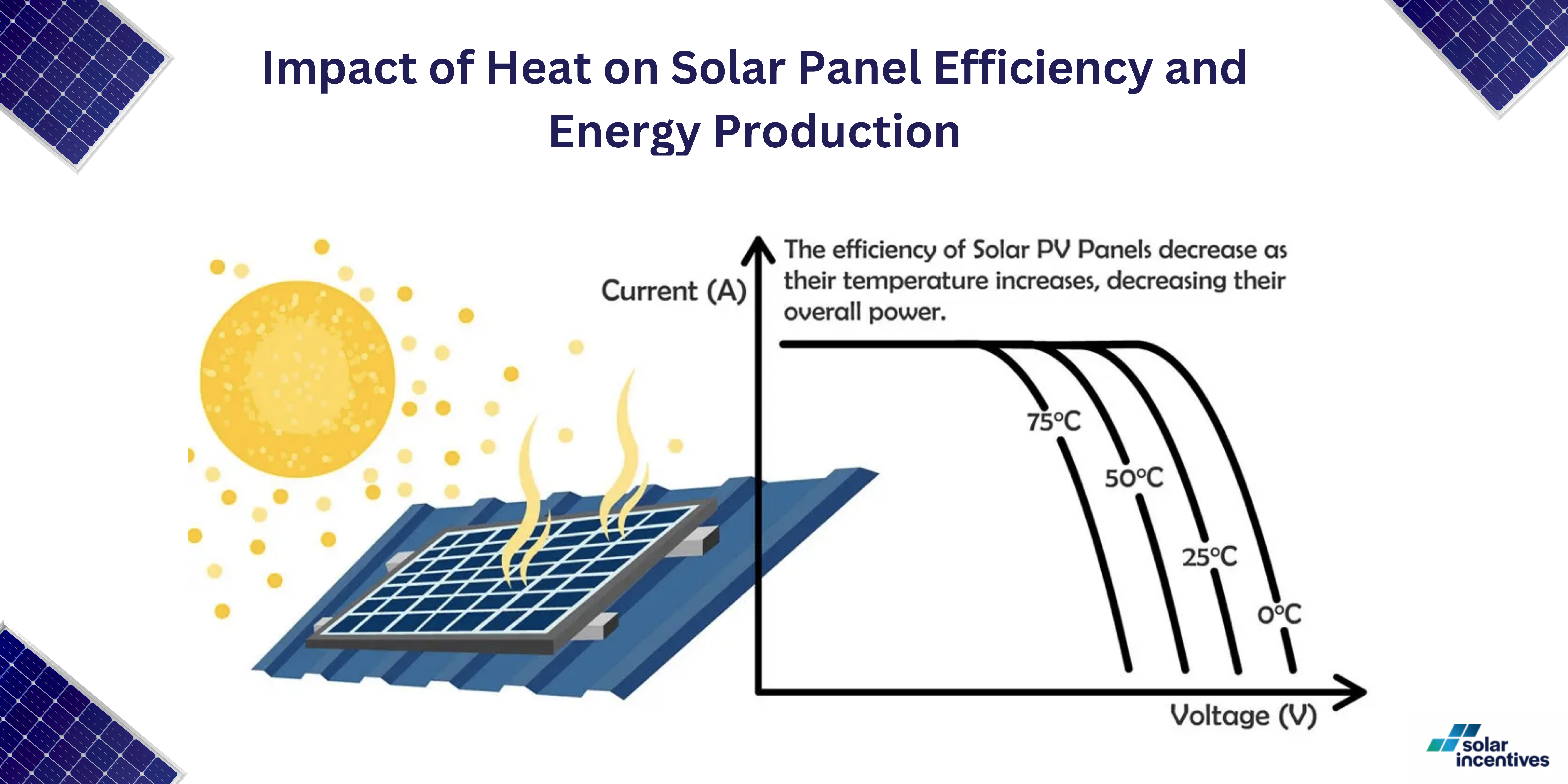
Australia’s climate offers abundant sunlight, making it an ideal location for solar power. However, the high temperatures, especially in regions like the tropical north and arid central areas, present a significant challenge.
While sunlight is crucial for solar energy production, excessive heat can reduce panel efficiency and accelerate wear and tear, impacting their long-term performance.
Temperature Coefficient: Navigating Efficiency Challenges
The temperature coefficient is a vital metric in assessing a solar panel’s performance under high temperatures.
It quantifies how much a panel’s efficiency decreases with each degree rise in temperature. Generally, a lower temperature coefficient is better, as it means the panel’s performance is less affected by heat.
This factor becomes important in Australia’s hotter regions. Where choosing panels with a lower temperature coefficient can enhance energy production efficiency.
Heat-Related Degradation: Preserving Long-Term Performance
Prolonged exposure to high temperatures can cause various forms of degradation in solar panels.
Factors like thermal cycling, damp heat, and potential-induced degradation can lead to a decline in performance and lifespan.
In Australia’s climate, it’s crucial to select solar panels and materials that are specifically designed to withstand these conditions.
Implementing cooling strategies, such as proper panel spacing for air circulation and installing panels at angles that reduce heat accumulation, can also play a critical role in mitigating heat-related degradation.
Factors Influencing Solar Panel Efficiency
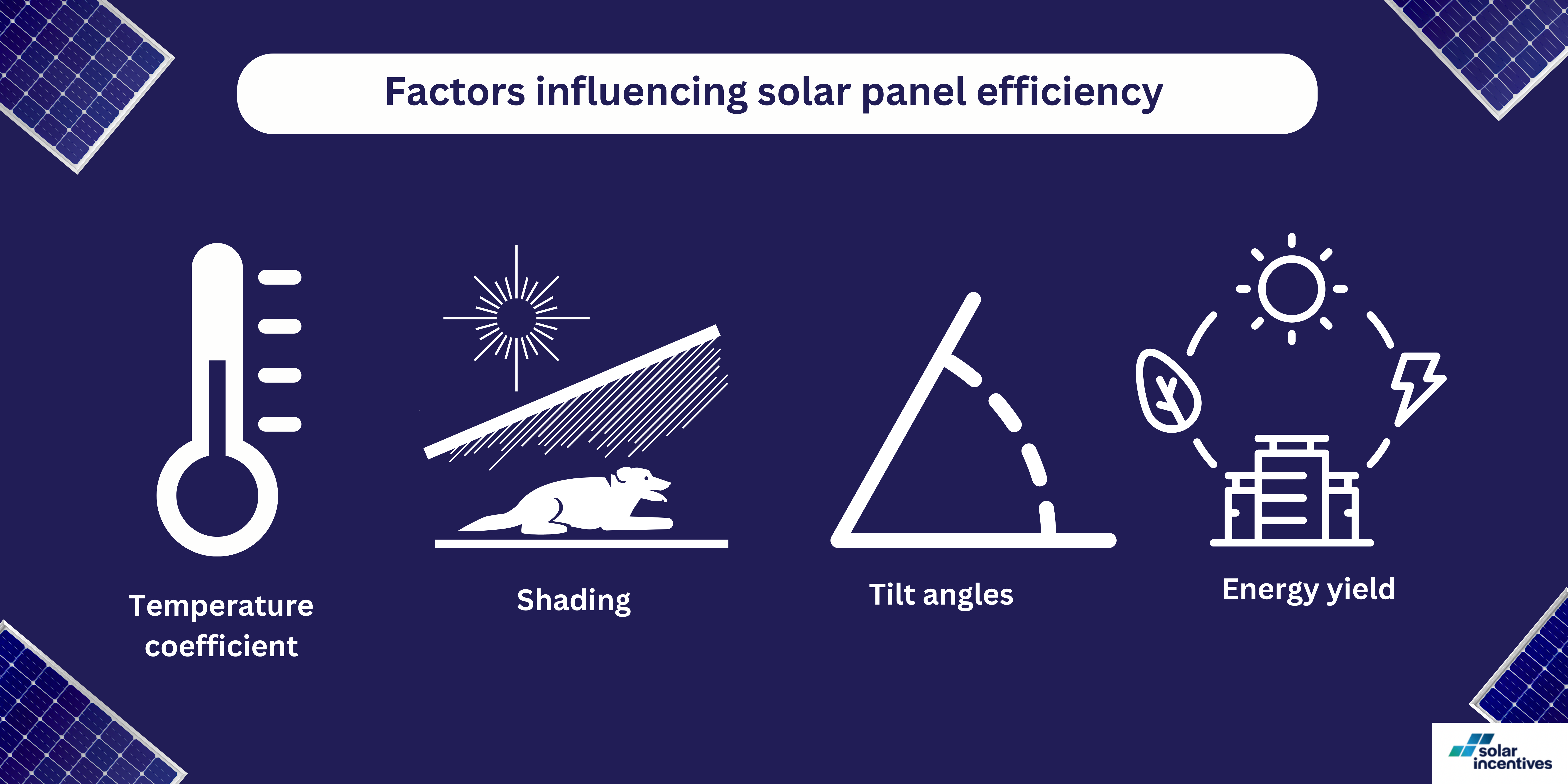
So, you’ve embraced the sunny side of life and invested in solar panels to harness the power of the sun. But did you know that certain factors can influence how efficiently your solar panels operate?
Temperature coefficient
Think of this as your panels’ ability to handle hot days. The hotter it gets, the less efficient they might be.
Managing heat helps keep your panels working well, even on scorching days.
Shading
While the sun is great, shadows are not your panels’ friends. Even a bit of shade, from buildings or trees, can make them work less efficiently.
A well-designed solar system takes shade into account, so your panels keep working smoothly.
Tilt angles
Picture your panels as sun followers. Adjusting their tilt angles is like turning a sunflower towards the sun.
Getting the angles just right makes sure your panels get the most sunlight all day long. This fine-tuning boosts overall efficiency and makes your solar setup more effective.
Energy yield
Looking at the big picture, the goal is to get the most electricity out of your solar system over time. Where you are, the weather, and how good your panels are all play a part.
Smart planning to optimise these factors ensures a steady and sustainable energy output, keeping you happy in the long run.
Common Damages and Challenges
Warped Frames and Bowed Modules
In extreme heat, solar panel frames can undergo thermal expansion, leading to warping.
The stress caused by this warping may compromise the structural integrity of the panels over time.
Consequences of Bowed Modules
Bowed or warped modules may create uneven pressure on the solar cells, affecting their performance.
This makes them more likely to get damaged by strong winds and other environmental factors.
Mitigation Strategies
Implementing proper installation practices, such as using high-quality, heat-resistant materials for frames.
Regular structural assessments and maintenance to detect and address warping issues promptly.
Degradation of Photovoltaic Cells
Accelerated Degradation in High Temperatures
When it gets really hot, the materials in solar cells break down faster. This leads to less efficient cells over time.
Impact on Lifespan and Efficiency
As the cells break down, solar panels don’t last as long. Less efficiency means less energy and potential money loss for solar panel owners.
Mitigation Strategies
Choosing solar panels made to handle high heat. Using smart technologies or cooling techniques to keep them at the right temperature.
Inverter Overheating
Role of Inverters in Solar Systems
Inverters convert direct current (DC) generated by solar panels into usable alternating current (AC).
Overheating can occur when inverters are exposed to prolonged periods of extreme heat.
Risks Associated with Overheating
Reduced inverter efficiency and potential system shutdowns.
The lifespan of inverters may be significantly shortened, leading to increased maintenance costs.
Mitigation Strategies
Locating inverters in well-ventilated areas to facilitate heat dissipation. Incorporating advanced inverter technologies with built-in temperature regulation features.
Strategies for Enhancing Solar Panel Performance in High Temperatures
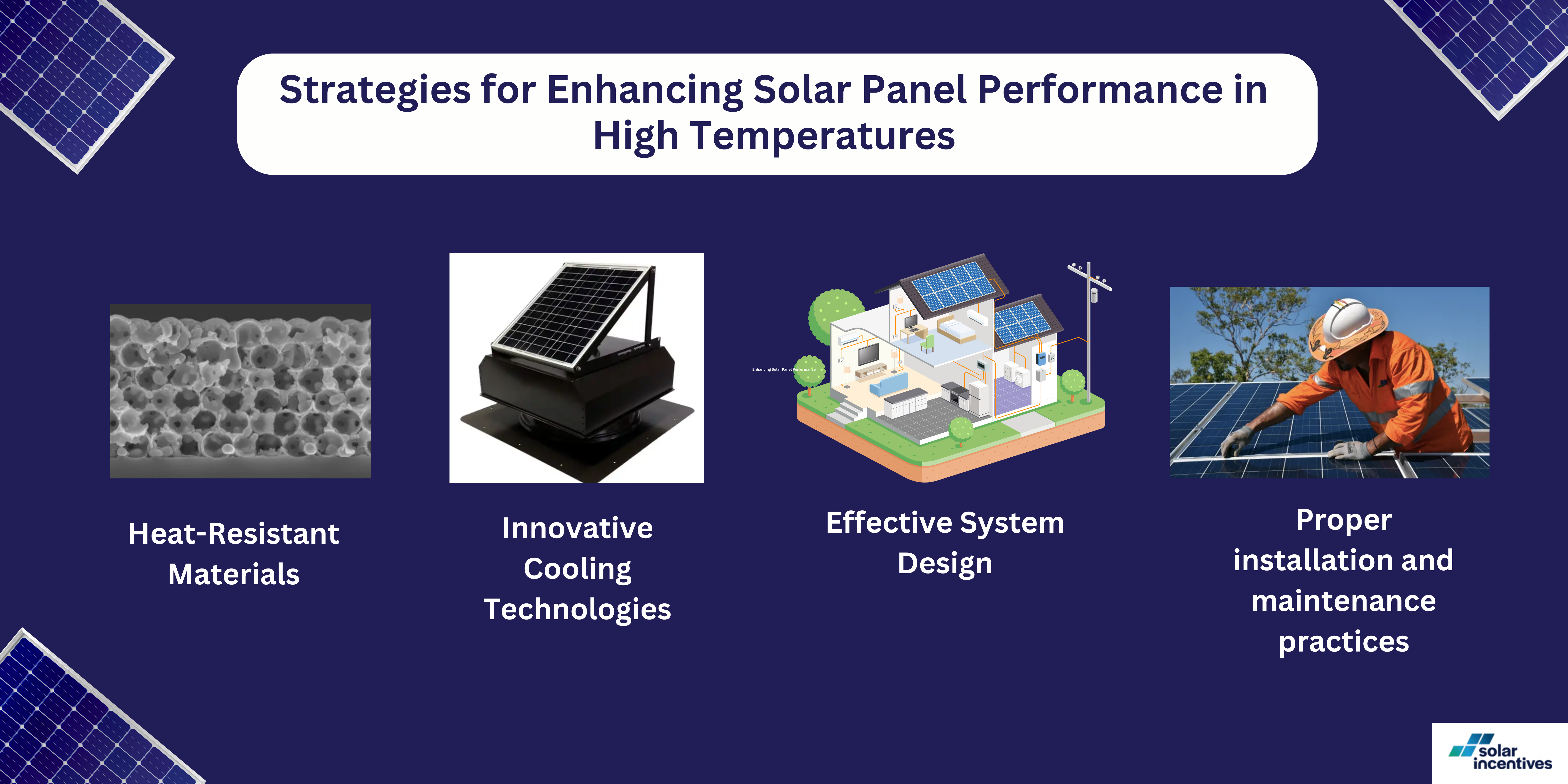
Heat-Resistant Materials
In the Australian sun, it’s crucial to pick materials that can handle high temperatures for your solar panels.
Advanced designed semiconductor materials keep the panels strong and prevent any damage. Innovative coatings that resist heat act like a shield, protecting panels from the harm caused by too much sunlight.
Focus on solar panels with these strong features, you make sure they last a long time and keep working well, even in extreme temperatures.
Innovative Cooling Technologies
Keeping solar panels cool is super important to avoid problems in extreme heat.
You can use active cooling systems with things like fans or water circulation. It helps to get rid of heat when it’s super hot, keeping everything working well.
Passive cooling methods, such as heat sinks and heat-conductive materials, are available. These methods naturally remove heat more efficiently.
Effective System Design
Aligning panels with the path of the sun helps reduce heat absorption. This also lowers the risk of efficiency loss.
Calculating the ideal tilt angle ensures panels receive even sunlight. This prevents overheating in one specific area.
Micro-inverters can also be strategically employed to optimise energy production. It mitigates the impact of temperature differentials across the solar array.
With smart design choices, experts can make sure solar panels work super well, even in Australia’s hot weather.
Proper installation and maintenance practices
To make sure your solar panels work their best, it’s not just about choosing the right materials and technology. How you install them and keep them in shape matters a lot.
Proper installation practices are crucial, ensuring panels are correctly aligned and well-ventilated.
Regular maintenance is equally important. Cleaning to prevent dust buildup and inspections to identify potential issues should be routine.
Installing and maintaining solar panels properly ensures their long-lasting reliability. They can provide sustainable energy even in Australia’s harsh climate.
Selecting the Right Solar Panels for Australian Conditions
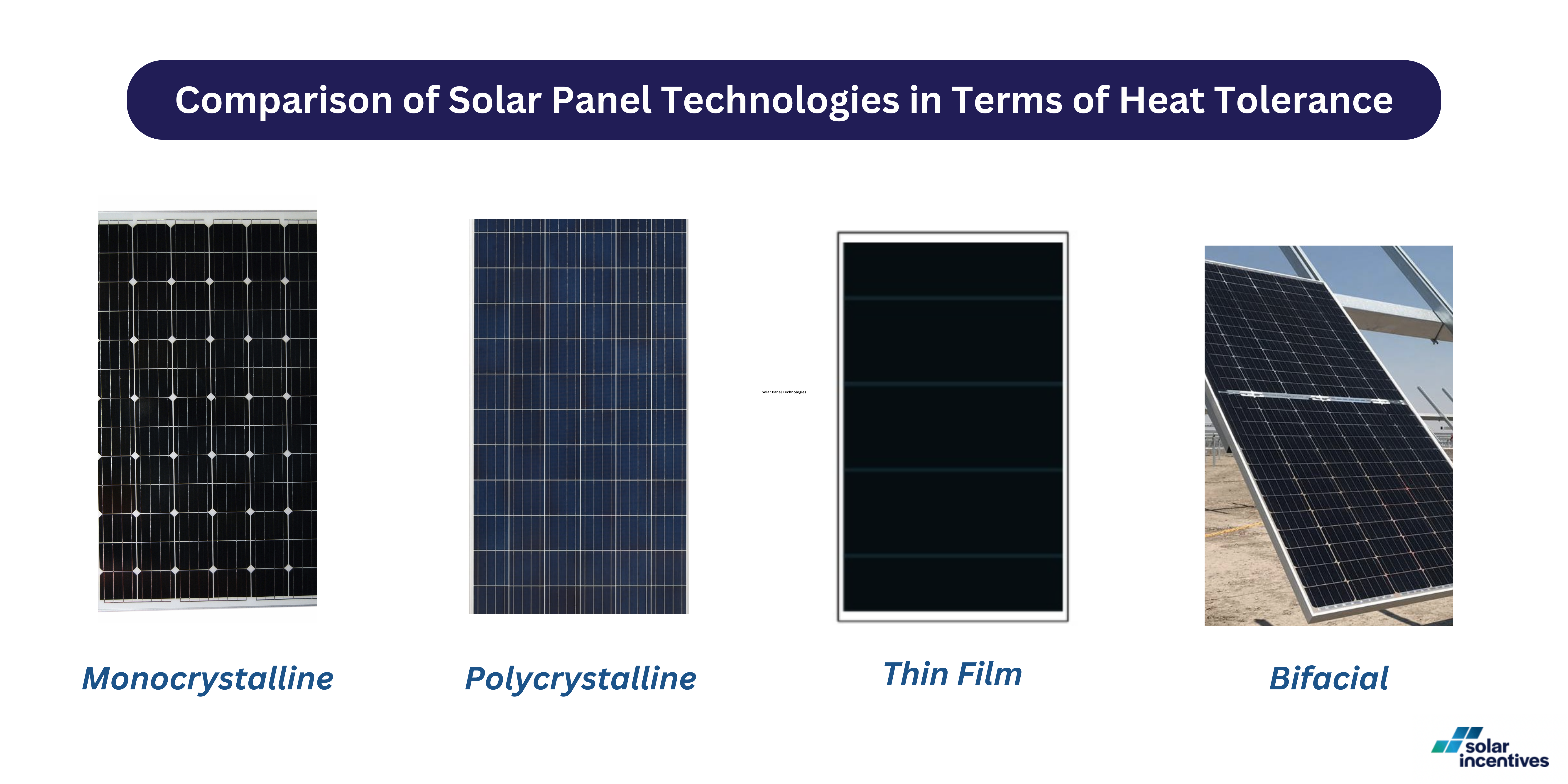
Australia has various climates, from hot deserts to mild coastal areas. Choosing the right solar panels for these conditions is important.
Let’s look at how different solar panel technologies handle heat in Australia:
Comparison of Solar Panel Technologies in Terms of Heat Tolerance
Australia’s high temperatures can significantly impact solar panel efficiency. Let’s assess how different technologies cope with heat:
Monocrystalline
Monocrystalline panels perform well in hot temperatures because they have a lower temperature coefficient. This means they lose less efficiency when it gets hot.
Polycrystalline
Polycrystalline panels are generally strong. They may have a slightly higher temperature coefficient than monocrystalline panels. This leads to a bit more efficiency loss in extreme heat.
Thin-Film
Thin-film panels have a higher temperature coefficient, making them more prone to efficiency loss in hot climates. However, technological advancements are improving their performance over time.
Bifacial
Bifacial panels can use reflected sunlight, helping them cope better with heat challenges. They may offer more stable performance in high-temperature environments.
Recommendations for Selecting Solar Panels Suitable for Australia’s Climate
Prioritise Monocrystalline Panels
Monocrystalline panels are a great pick for Australia’s climate because they handle heat well. They keep producing energy efficiently even in really hot weather.
Explore Bifacial Technology
Bifacial panels, with their ability to capture reflected sunlight, can be advantageous in areas with high heat. Consider these for installations where ground or surface reflectivity is a factor.
Consider Quality and Durability
Look for solar panels from reputable manufacturers known for producing high-quality, durable products.
This ensures longevity and resilience in the face of Australia’s challenging weather conditions.
Consult with Experts
Seek advice from solar professionals who have experience with Australian installations. They can provide insights into local conditions and recommend panels that have proven success in similar environments.
Future Trends and Innovations
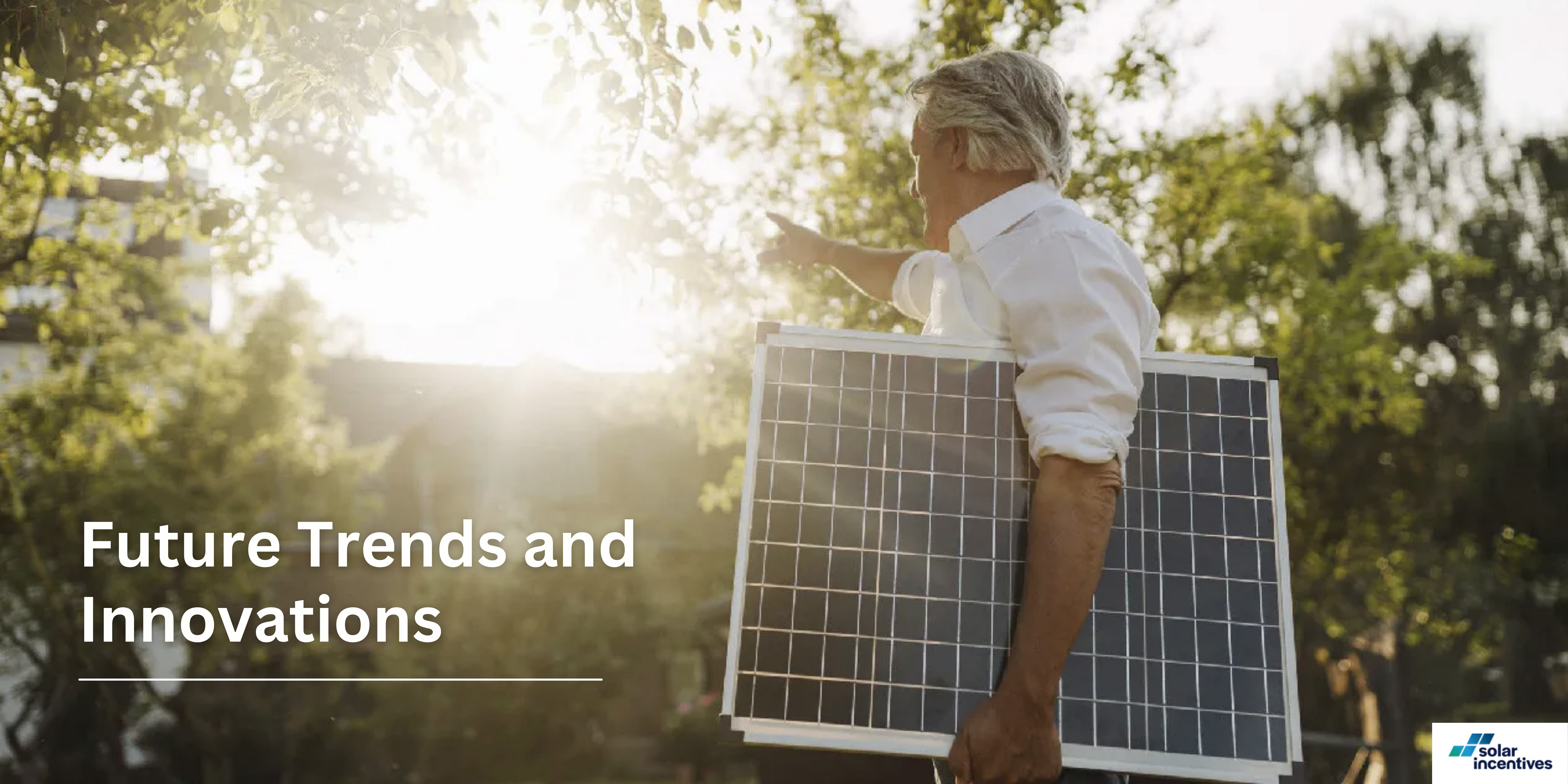
Delving deeper into the future, emerging technologies play a pivotal role in enhancing solar panel efficiency, particularly in extreme heat conditions.
Next-Generation Photovoltaic Materials
Photovoltaic materials continuously evolve, promising higher solar panel efficiency.
Researchers are looking into materials that can handle heat better, capture light more effectively, and last longer.
Next-generation materials aim to address the challenges of prolonged exposure to extreme heat. These materials ensure sustained performance and longevity.
Smart Thermal Management Systems
Innovative thermal management systems are becoming integral to optimising solar panel efficiency.
These technologies actively control temperature and get rid of extra heat. It also makes sure the panels are working under the best conditions.
This not only helps in dealing with really hot weather but also improves the overall performance of solar panels.
Conclusion
Exploring solar panels in extreme heat in the Australian climate has given us a comprehensive understanding of challenges, strategies, and future trends in solar energy.
Recognising the challenges of high temperatures, we explore innovative solutions. This will lead to a resilient and efficient solar energy landscape in Australia.
Looking towards the future, we must prioritise sustainable practices and continuous innovation. These will be crucial in fully harnessing solar power in extreme heat conditions.
Ready to be part of Australia’s clean energy revolution? Discover the right solar solutions for you with Solar Incentives.
Learn more about government incentives for renewable energy and start your journey towards a greener future. Visit us and explore your options through our 2025 Solar Program.
Article By
Steve Hill
Steve Hill has a rich background in the solar energy sector and is dedicated to empowering consumers with knowledge, particularly in residential and commercial solar solutions, solar batteries, and energy efficiency products.
Steve enjoys sharing his wealth of experience, offering practical advice, and learning about the latest trends and innovative solutions in the world of solar energy.

